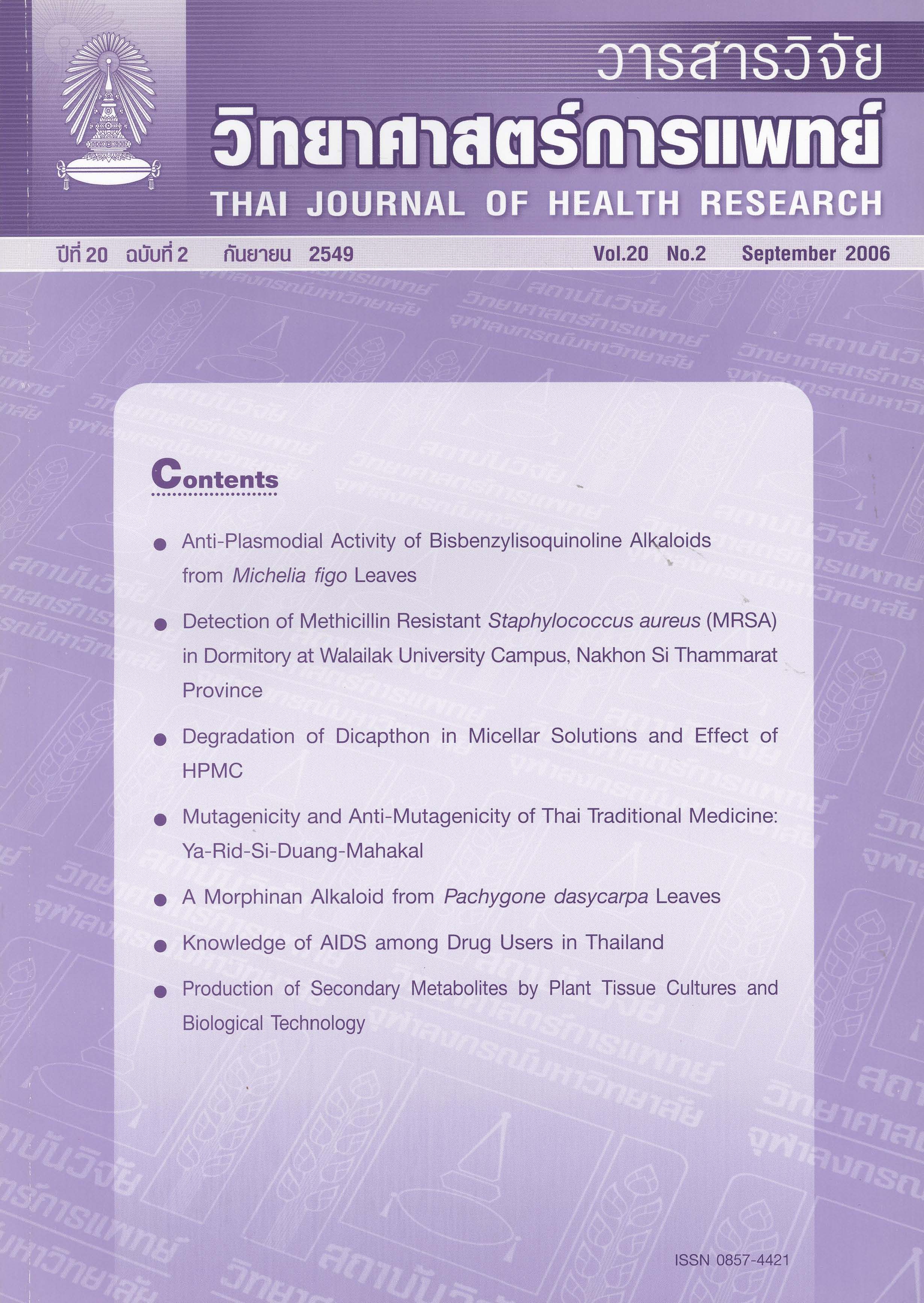Degradation of Dicapthon in Micellar Solutions and Effect of HPMC
Keywords:
dicapthon, hydroxypropylmethyl cellulose, critical micelle concentrations, second order kinetic reactionAbstract
Observed critical micelle concentrations (CMC) of cetyltrimethylamonium bromide (CTAB) in the buffer solutions without and with hydroxypropylmethyl cellulose (HPMC) were found to be different using surface tension measurement. They were 5.65 x 10-5 ± 0.26 x 10-5 M in the absence of HPMC, 1.16 x 10-4 ± 0.16 x 10-4 M in 0.05% HPMC and 1.21 x 10-4 ± 0.05 x 10-4 in 0.3% HPMC. These results implied the interaction between CTAB and HPMC in the systems. Micellar solution of CTAB has been found to accelerate degradation of dicapthon, with o-iodosobenzoic acid presence, (IBA) which undergoes a second order kinetic reaction. In the absence of HPMC, the reaction rate constant in buffer solution without CTAB and in 2 mM CTAB micelle solution were 1.44 ± 1.09 and 473.46 ± 10.29 M-1min-1, respectively. However, this acceleration effect significantly decreased when HPMC was introduced in the micellar solutions. The rate constants were 448.92 ± 4.44 M-1min-1 and 310.93 ± 5.08 M-1min-1 in 0.05% HPMC and 0.3% HPMC, respectively, with 2 mM CTAB micelle concentration. The influence of CTAB micelles and HPMC on the reaction is explained by effective concentration effect.







